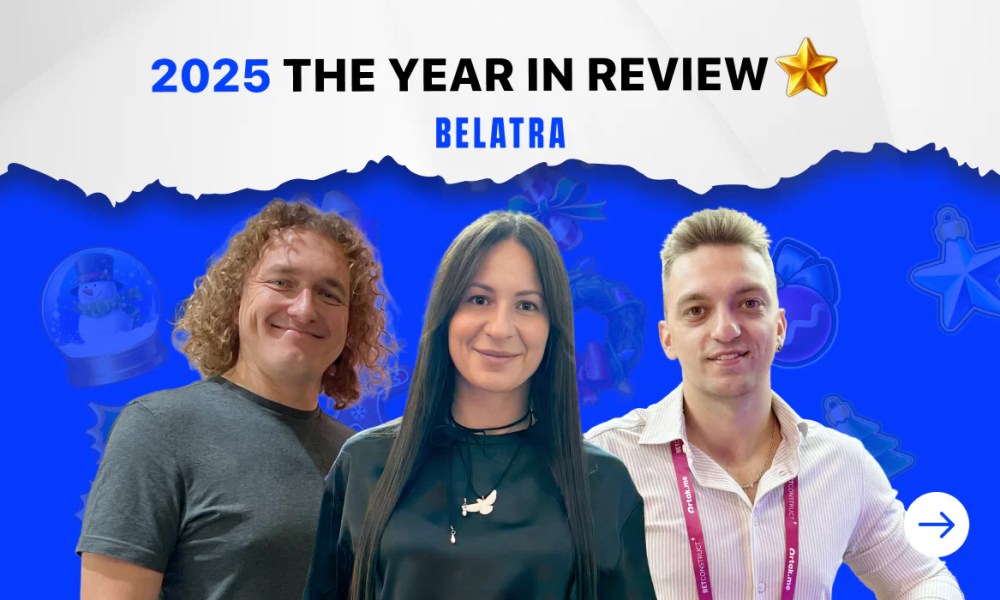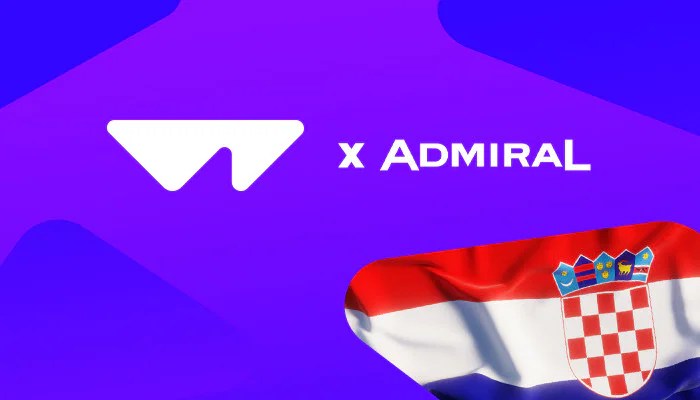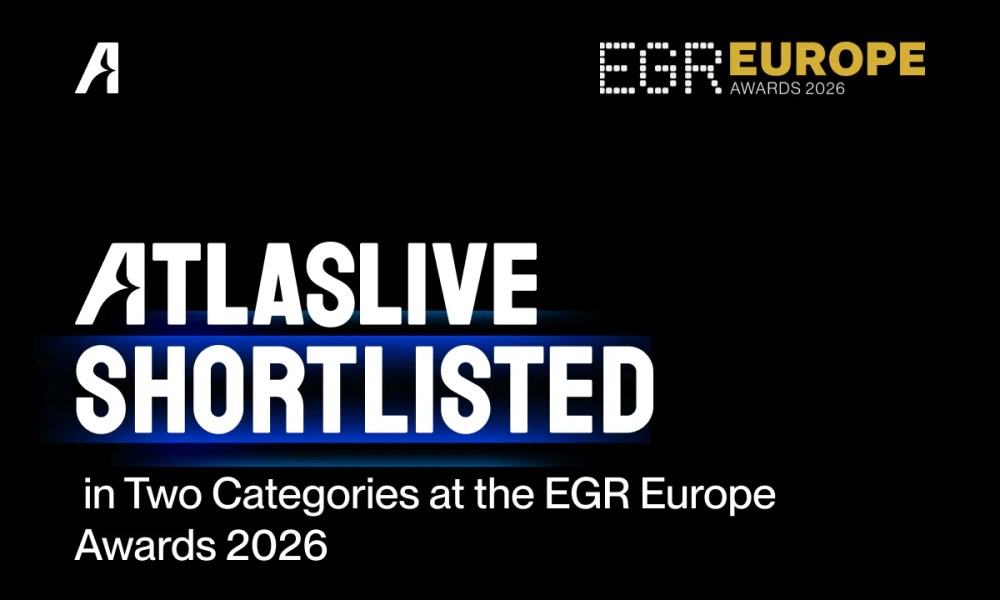Latest News
Jogo Global interview: Offering alternative content to UK operators
Jogo Global, having recently been granted its licence by the UK Gambling Commission, now has its eyes set firmly on achieving growth in one of the world’s most recognised gambling markets. The fast-growing platform provider and casino content developer is already intensifying its activity in the region, negotiating with big-name operators to demonstrate its approach to delivering new and exciting gaming experiences.
European Gaming caught up with group CEO David Marcus to discuss how the ambitious company’s differentiated product portfolio will be highly appealing to UK-licensed operators, including the importance of gamification tools to elevate the user experience.
European Gaming: What are your immediate plans in the UK market, now that you are licensed in the region?
David Marcus (DM): Securing such a licence is a detailed and comprehensive process with many boxes that needed to be ticked. Attaining a Remote Gambling Software and Games Host (Casino) licence shows that we have the necessary infrastructure to deliver to the highest of standards. The process was managed by our General Manager/Compliance Officer Ellen Sezerino, along with the outstanding Jessica Wilson from law firm Harris Hagan. I cannot commend both Ellen and Jessica enough on their hard work, guidance and knowledge from start to finish.
With the UKGC licence, the bar is set incredibly high – we welcome this high threshold, as it maintains a high standard industry-wide. We have already begun to capitalise on the opportunities the licence has given us, creating positive relationships with a number of leading operators to distribute our content and build high-quality platforms.
European Gaming: Which of your products do you think will especially resonate with UK operators and why?
DM: Slots always resonate with UK operators and their players, but I think the market is shifting towards experiences that offer something unique. The slots market is saturated and, as such, there is demand from online casinos for games with a difference. Our focus is on building niche products, such as crash games, video bingo and keno – bingo especially is a game that is underrepresented in this market. Regarding innovation in slots, we are also creating mini games for sportsbooks, which are small versions of games that play in a window while the main screen is still fixed on the latest odds and markets. It allows people to continuously bet in a variety of ways and focusing on incorporating additional playability like this, is one of Jogo Global’s core aims.
With new UKGC legislation enforced recently, auto-play is now no longer allowed. There have to be other ways to make games more attractive and empowering to play, so expect to see new types of games enter the marketplace, including hybrids of existing game types.
European Gaming: Player behaviours differ depending on the territory – how will you tailor your offering to meet the specific needs of the UK player?
DM: Player bases in certain international markets exhibit particular habits that we have to adapt to – players in Latin America are wanting to play quick, for example, so repeat play is something that demographic is comfortable with. A large segment of British players are more cautious, so play tends to be at a slower pace in the UK. The dynamic is different. As such, we place a lot of importance on bonus games and jackpots – the key is to create added incentives for players to give them a reason to keep playing and inject the experience with another level of value.
European Gaming: What will be the key to sustaining long-term success in the UK for Jogo Global?
DM: Gamification is the next stage for the industry, and Jogo is set to pioneer its use to the next level. In conversations with tier one operators, we have demonstrated that a great game, both in terms of gameplay and aesthetics, can still struggle to make waves in the market if it does not have great gamification behind it. It’s very easy to produce attractive, high-quality content but it is all about keeping players engaged. Tournaments, for example, are one of the game-changers of the market, they provide a USP for a game amidst the thousands of competing products. There is also the social aspect: playing with friends and sharing wins. Top-class games with cutting-edge images and robust maths form the basis of our operation, but what sets Jogo Global apart from the crowd is our commitment to games with engaging and unique gamification. Player engagement is key.
European Gaming: What markets does Jogo plan on entering next? What is informing your decision process?
DM: The US regulated market is on our radar. We have already picked up a few projects within the region and there is a demand for content of which our credentials show we are in the ideal position to provide – we have the platforms and content to support a robust omni-channel experience. At Jogo, all of the right mechanics are in place to solidify a good presence in the US and deliver cross platform content for the land-based casinos that are looking to get online, whether that be social slots or real money play. Watch this space!

Latest News
From ‘Mummyverse’ to Crash Games: Belatra Reviews a Landmark 2025
Editor’s Take
Why this matters: Belatra has been a steady hand in the slots world for a long time, but 2025 marked a distinct shift in strategy. By entering the Crash vertical with Goose Boom Bang and winning big at SiGMA Africa, the studio is clearly pivoting to capture the high-growth, high-frequency players in emerging markets. They are no longer just a “classic slots” developer; they are diversifying the portfolio to ensure relevance in regions like LatAm and Africa.
The Full Story
Belatra Games, the specialist online slots developer, has issued a strategic review of its 2025 operations, celebrating a 12-month period defined by entry into new game verticals, significant franchise expansion, and high-profile industry recognition.
The year was characterized by a dual strategy: deepening engagement in established markets while aggressively expanding its content portfolio to suit local preferences in emerging territories.
Portfolio Evolution: Crash and Battles 2025 saw Belatra move beyond its traditional slot roots. The company made its debut in the high-demand Crash game vertical with the launch of Goose Boom Bang, a title designed to tap into the fast-paced gameplay preference of younger demographics.
Additionally, the studio introduced a fresh game concept with the launch of Battles, a new format unveiled for the first time in 2025, with further development planned for 2026.
The ‘Mummyverse’ Expands For fans of classic slots, the highlight of the year was the aggressive expansion of the Mummyverse. Belatra nearly doubled the size of this franchise over the year, making it the most extensive game universe in their entire catalog.
The developer also focused on B2B localization, releasing a number of exclusive bespoke games created specifically for selected operator partners to meet specific local market tastes.
Awards and Recognition The company’s strategic shifts were validated by industry accolades. Belatra secured over 30 nominations throughout the year, with standout wins including:
-
Best Slot Provider (awarded by BitStarz).
-
Most Played Game of 2025 for Make It Gold at the SiGMA Africa Awards.
-
Player’s Pick Award.
Management Commentary Misha Voinich, Head of Business Development at Belatra, commented on the studio’s momentum:
“This year has truly defined who we are as a studio – ambitious, creative and focused on building long-term partnerships. We’ve expanded our universes, launched new ones and entered exciting new markets that will all help us carry this momentum into the New Year.”
The post From ‘Mummyverse’ to Crash Games: Belatra Reviews a Landmark 2025 appeared first on Gaming and Gambling Industry Newsroom.
Latest News
‘Chaos and Soul’: Ebaka Games Plots Global Expansion After Viral Launch
Editor’s Take
Why this matters: The “Instant Game” vertical (Crash, Plinko, Mines) is becoming crowded, but Ebaka Games is cutting through the noise with a distinct brand personality. By securing BMM Testlabs certification so quickly after launch, they are signaling to Tier 1 operators that despite their “chaotic” marketing vibe, the math underneath is solid and compliant. The backing of industry veteran Dmitry Belianin also adds immediate commercial credibility to the startup.
The Full Story
Ebaka Games, the fledgling studio that promises to bring “chaos and soul” to the iGaming sector, has outlined an aggressive growth strategy for 2026 following a landmark launch period in late 2025.
The studio, which officially debuted in November, reports that its initial rollout reached more than five million people worldwide. The launch saw its portfolio go live with the operator Menace, serving as the initial testbed for its mechanics and “Ebaka modes.”
The Product: Instant Games with Personality Ebaka is bypassing traditional slots to focus on the high-growth vertical of fast-paced, instant-win games. Their initial lineup includes:
-
Plinko
-
Mines
-
Tower
-
Limbo
-
Crash
Differentiation is achieved through unique mascots and signature gameplay tweaks designed to offer high win potential and distinct visual identities, moving away from the generic interfaces often found in this genre.
Regulatory Milestone Crucially for its 2026 roadmap, Ebaka Games has confirmed it has secured certification from BMM Testlabs. This accreditation validates the fairness and integrity of its RNG (Random Number Generator) and game engines, removing a major barrier to entry for regulated markets. With this certification in hand, the studio plans to launch with a number of “major brands” in the coming year.
Management Commentary Vitalii Zalievskyi, CEO of Ebaka Games, commented on the studio’s unorthodox approach:
“It’s only been a few weeks since we first introduced Ebaka Games to the world. The feedback has been breathtaking, and it vindicates the decision for us to take a different path to the rest of the industry. You don’t need huge marketing budgets to grab people’s attention if you are building something truly innovative.”
Industry Backing The studio describes itself as being “created by players for players” but boasts significant industry firepower in its corner. The team includes Dmitry Belianin, a well-known figure in the sector who is the co-founder of Blask and Menace, as well as Managing Partner at Already Media.
The post ‘Chaos and Soul’: Ebaka Games Plots Global Expansion After Viral Launch appeared first on Gaming and Gambling Industry Newsroom.
Latest News
Racing Meets Nightlife: SBK Backs ARC’s New ‘Friday Night Live’ Series
Editor’s Take
Why this matters: British racing has a well-documented demographic problem; its core audience is aging. “Friday Night Live” is a direct attempt to fix this by blending high-stakes racing with the “experience economy” (DJs, nightlife vibes) that appeals to Gen Z and Millennials. Bringing SBK on board—a mobile-first, app-only sportsbook—is a perfect demographic fit, while the Racing Post adds the necessary credibility to ensure the actual racing product remains the focus.
The Full Story
Arena Racing Company (ARC) has unveiled the strategic commercial lineup for its upcoming Friday Night Live series, confirming SBK as the Exclusive Betting Partner and The Racing Post as the Official Media Partner.
Set to launch in January 2026, Friday Night Live is a new initiative created in collaboration with youth-focused events company INVADES. The series is designed to overhaul the traditional race day experience, featuring fast-paced fixtures under floodlights, DJ sets, and significant entertainment elements sandwiched between races.
The Commercial Deal
-
SBK: As the exclusive betting partner, the Smarkets-owned sportsbook will take naming rights and on-course branding for all 35 races. Crucially, these races will be broadcast live on mainstream television via ITV Racing as well as Sky Sports Research.
-
The Racing Post: As the Official Media Partner, the publication will provide content, coverage, and promotion across its digital platforms, aiming to bridge the gap between established racing purists and the new audience ARC hopes to attract.
A High-Stakes Experiment The series is not just a marketing exercise; it carries serious sporting weight. Each of the five scheduled nights will feature over £200,000 in prize money. The fixtures will rotate across three of ARC’s all-weather tracks: Wolverhampton, Newcastle, and Southwell.
Management Commentary David Leyden Dunbar, Group Director of Commercial Strategy at ARC, was clear about the target audience:
“We have been very clear that one of the aims of Friday Night Live is to engage the next generation of racing fans… Both [partners] have shown real enthusiasm to work with us… as well as using the platform that these fixtures will offer them to also engage with more established racing and sports fans.”
Adam Baylis, Marketing Director at SBK, added:
“Friday Night Live [is] a fresh and engaging concept that brings a new energy to British racing. SBK has always been built around sport… our focus is on enhancing the live race day experience in a fun, social and responsible way.”
The 2026 Schedule The series kicks off immediately in the new year:
-
9th Jan: Wolverhampton
-
6th Feb: Newcastle
-
20th Feb: Southwell
-
20th March: Wolverhampton
-
27th March: Newcastle
The post Racing Meets Nightlife: SBK Backs ARC’s New ‘Friday Night Live’ Series appeared first on Gaming and Gambling Industry Newsroom.
-

 Latest News2 weeks ago
Latest News2 weeks agoSCCG Announces Strategic Partnership with Yellow Elephant Studios to Expand Multi-Channel Gaming Content Worldwide
-
Latest News2 months ago
JioBLAST Launches All Stars vs India powered by Campa Energy: A New Era of Creator-Driven Esports Entertainment
-
eSports1 month ago
CS:GO Betting Gains Momentum in the iGaming Sector
-
Latest News3 weeks ago
THE 2025 PUBG MOBILE GLOBAL CHAMPIONSHIP GROUP STAGE WRAPS UP WITH LAST CHANCE IN SIGHT
-
Latest News1 month ago
S8UL Esports acquires Team Elite’s Free Fire MAX roster to form S8UL Elite
-
Latest News2 months ago
RocketPlay wins Best Customer Service at European iGaming Excellence Awards
-
Latest News2 months ago
Kambi Group plc Q3 2025 Report
-
Latest News3 months ago
GGPoker Unveils Massive Weekly $100K Freeroll, Kicking Off October 18













You must be logged in to post a comment Login